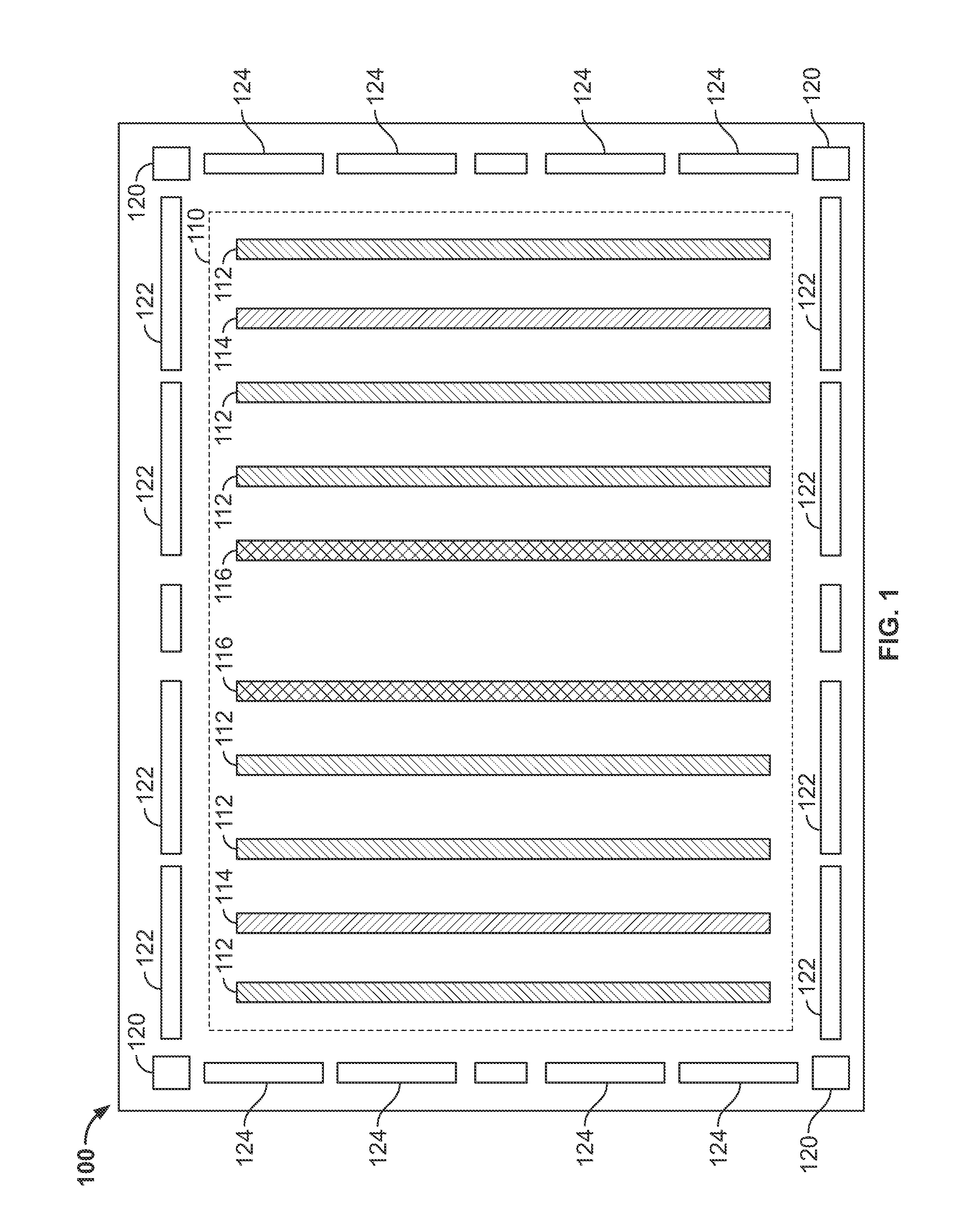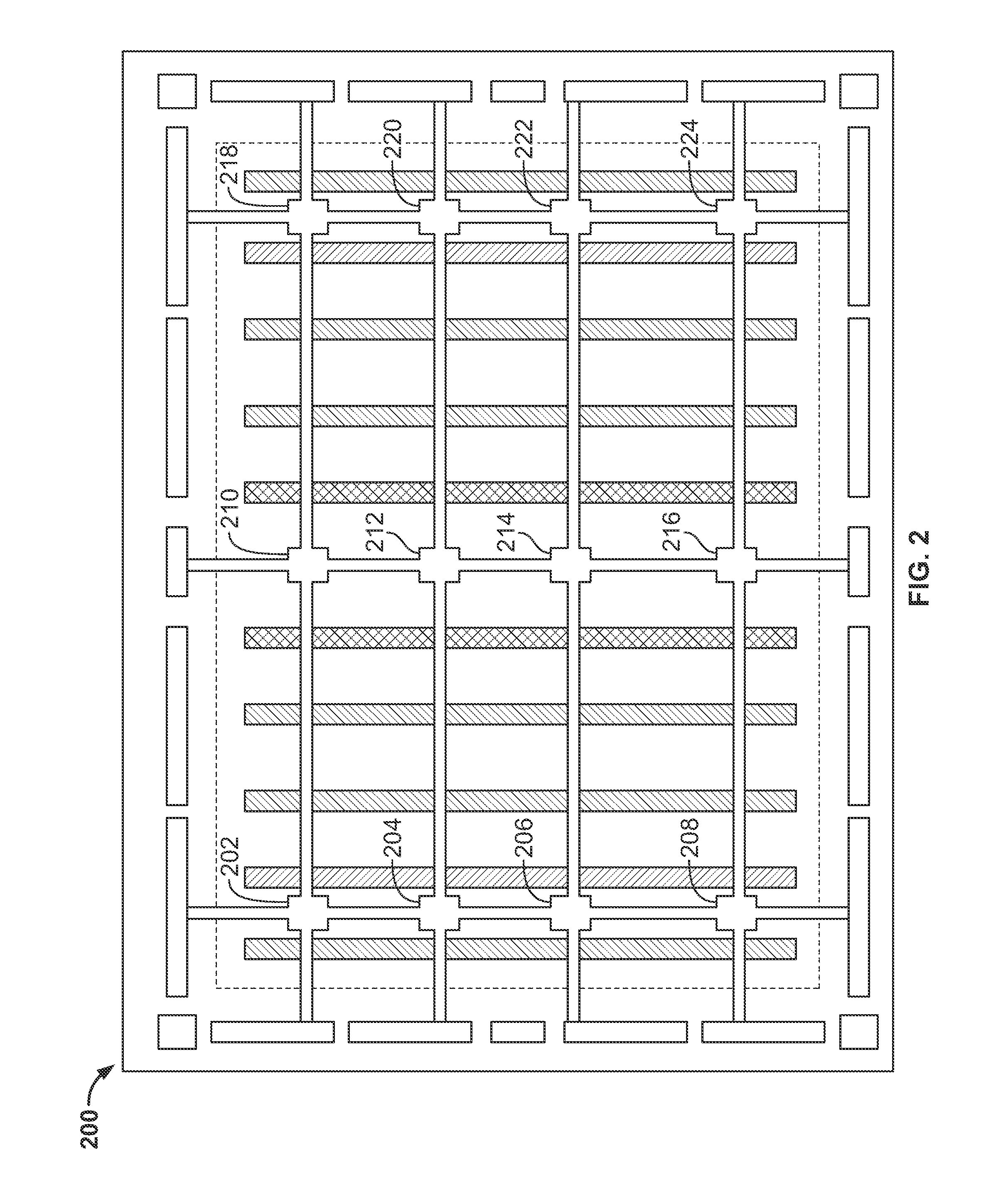Programmable logic device with integrated network-on-chip
a logic device and network-on-chip technology, applied in the field of programmable logic devices with integrated network-on-chip, can solve the problems of inefficient devices, inefficient wire use, and inefficiency of devices
- Summary
- Abstract
- Description
- Claims
- Application Information
AI Technical Summary
Benefits of technology
Problems solved by technology
Method used
Image
Examples
Embodiment Construction
[0029]FIG. 1 depicts an illustrative floorplan 100 of an FPGA in accordance with an implementation. The floorplan 100 depicts various illustrative blocks of an FPGA. The floorplan 100 includes core logic fabric 110, which may have configurable logic blocks, look-up tables (LUTs), and / or D flip-flops (DFFs) (not explicitly shown in FIG. 1). The floorplan 100 includes memory blocks 112 and memory block 116. The memory blocks 112 may each be of a different bit size than the memory blocks 116. For example, in one arrangement, each of the memory blocks 112 is a 512-bit memory block, while each of the memory blocks 116 is a 4,096-bit memory block. The floorplan 100 includes variable-precision digital signal processing (DSP) blocks 114. In some arrangements, each DSP block of the DSP blocks 114 includes a number of multipliers, adders, subtractors, accumulators, and / or pipeline registers.
[0030]The floorplan 100 includes phase lock loops (PLLs) 120 and general purpose input-output (I / O) int...
PUM
 Login to View More
Login to View More Abstract
Description
Claims
Application Information
 Login to View More
Login to View More - R&D
- Intellectual Property
- Life Sciences
- Materials
- Tech Scout
- Unparalleled Data Quality
- Higher Quality Content
- 60% Fewer Hallucinations
Browse by: Latest US Patents, China's latest patents, Technical Efficacy Thesaurus, Application Domain, Technology Topic, Popular Technical Reports.
© 2025 PatSnap. All rights reserved.Legal|Privacy policy|Modern Slavery Act Transparency Statement|Sitemap|About US| Contact US: help@patsnap.com



